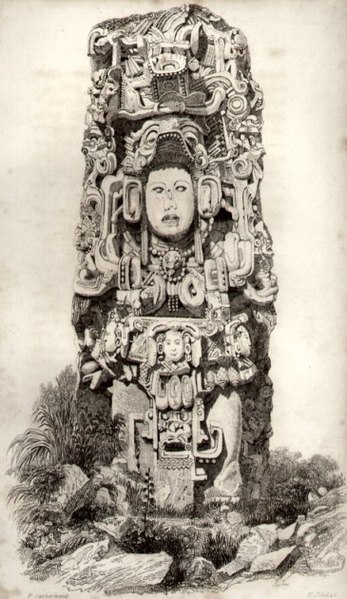A khachkar or Armenian cross-stone is a carved, memorial stele bearing a cross, and often with additional motifs such as rosettes, interlaces, and botanical motifs. Khachkars are characteristic of medieval Christian Armenian art.
The famous khachkar at Goshavank, carved in 1291 by the artist Poghos
The famous 13th century Armenian-inscribed double khachkars of the Memorial Bell-Tower of the Dadivank Monastery
A 15th century khachkar at the Armenian Cathedral of Saint James, Jerusalem
Two 16th century Julfa khachkars in Etchmiadzin, removed from the Julfa graveyard before its destruction by Azerbaijan.
A stele, or occasionally stela when derived from Latin, is a stone or wooden slab, generally taller than it is wide, erected in the ancient world as a monument. The surface of the stele often has text, ornamentation, or both. These may be inscribed, carved in relief, or painted.
Stele N from Copán, Honduras, depicting King K'ac Yipyaj Chan K'awiil ("Smoke Shell"), as drawn by Frederick Catherwood in 1839
Stele to the French 8th Infantry Regiment. One of more than half a dozen steles located on the Waterloo battlefield.
The funerary stele of Thrasea and Euandria, c. 365 BC
Stela of Iddi-Sin, King of Simurrum. It dates back to the Old Babylonian Period. From Qarachatan Village, Sulaymaniyah Governorate, Iraqi Kurdistan. The Sulaymaniyah Museum, Iraq.








